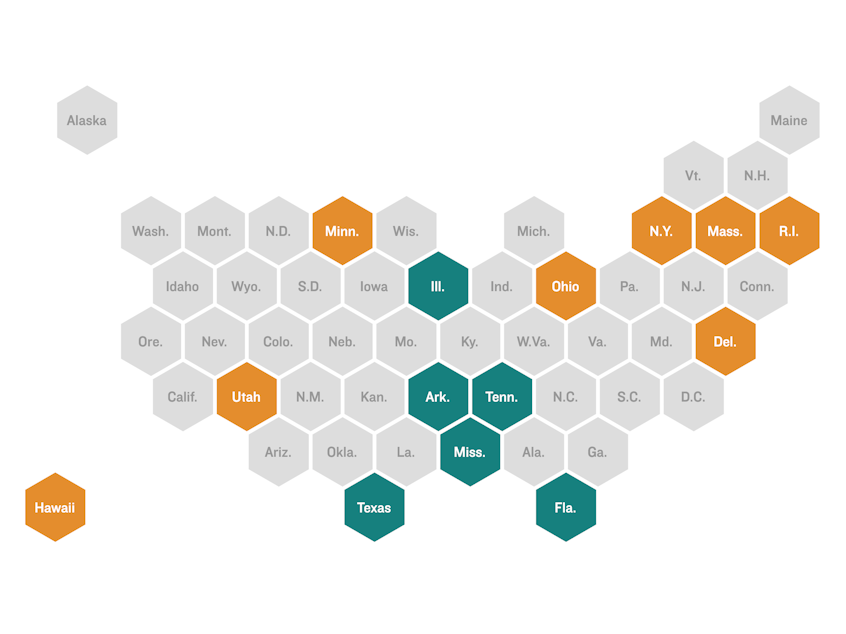These 14 states had significant miscounts in the 2020 census

For the 2020 census, all states were not counted equally well for population numbers used to allocate political representation and federal funding over the next decade, according to a U.S. Census Bureau report released Thursday.
A follow-up survey the bureau conducted to measure the national tally's accuracy found significant net undercount rates in six states: Arkansas (5.04%), Florida (3.48%), Illinois (1.97%), Mississippi (4.11%), Tennessee (4.78%) and Texas (1.92%).
It also uncovered significant net overcount rates in eight states — Delaware (5.45%), Hawaii (6.79%), Massachusetts (2.24%), Minnesota (3.84%), New York (3.44%), Ohio (1.49%), Rhode Island (5.05%) and Utah (2.59%).
For the other 36 states, as well as Washington, D.C., the bureau did not find statistically significant net over- or undercount rates.
These revelations come after the population totals from a census beset by the coronavirus pandemic and years of interference from former President Donald Trump's administration have already been used to divvy up seats in the House of Representatives, as well as votes in the Electoral College, for the next decade.
During a press briefing on Wednesday, bureau officials emphasized the follow-up survey's estimates, which were delayed largely because of the pandemic, will not change each state's share of representation in the House or the Electoral College.
The Supreme Court ruled in 1999 that statistical sampling, which would be needed to factor in the states' over- and undercount rates, cannot be used to produce the census data for reapportioning Congress.
Last year, the House clerk certified each state's new share of House seats based on the 2020 population tallies.
The bureau, however, does plan to use these estimates from its Post-Enumeration Survey in planning for the 2030 census that is already underway.
"It's a monumental task to count everybody. And this helps us inform how well we do," said Timothy Kennel, assistant division chief for statistical methods, during the briefing.
The bureau has been under pressure to release more quality metrics
Kennel, who led the follow-up survey's design, said that the new results were "in line with past censuses" that had over- and undercounts among various states.
Still, the 2020 results stand in stark contrast to the findings from the bureau's follow-up survey for the 2010 census, which had no statistically significant over- or undercounts for any state.
Concerned about the impact of COVID-19 and interference by Trump administration officials, many state and local officials, civil rights groups and other census stakeholders have been pressing for more quality metrics from the bureau.
Past counts have shown that census participation and the quality of the final numbers can vary greatly between neighborhoods and demographic groups.
In March, the bureau released follow-up survey findings that showed significant national net undercount rates for Black people and Latinos, as well as Native Americans living on reservations. The bureau also found significant national net overcount rates for white people who do not identify as Hispanic and Asian Americans.
The statistical agency, however, is not expected to release state-level over- or undercount rates by race and ethnicity or any rates for counties, cities or towns.
"We are interested in producing the highest quality estimates that people can rely on and trust. And we have to meet our standards, and we can't really say anything below the state level," Kennel said, noting that the bureau's plans for the 2020 count did not include producing more detailed metrics as it had in the past.
To try to ameliorate the effects of the over- and undercounts, the bureau has set up an internal team that plans to research how to factor the follow-up survey's results into the bureau's population estimates, which, along with census data, help guide the distribution of an estimated $1.5 trillion a year in federal money to local communities. [Copyright 2022 NPR]



